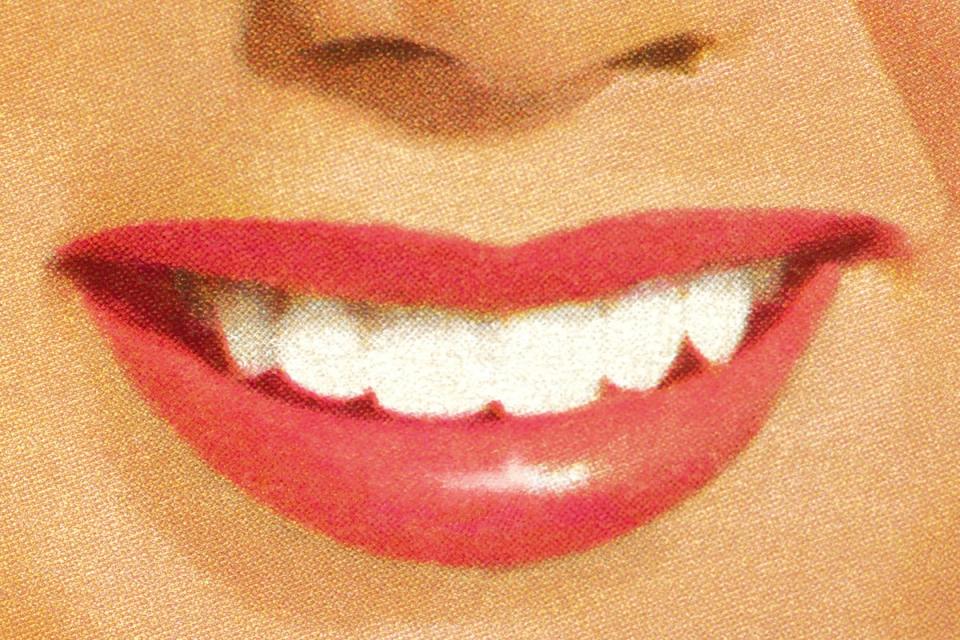Tooth hurts: Why are people turning on invisible dental aligners?

Carolyn Owlett had mentally prepared herself for 14 weeks of wearing discrete dental aligners to straighten her teeth. She hadn’t, though, prepared herself for the bill. After walking out of her initial Invisalign session with her dentist in 2019, she was asked to pay the standard fee: £3,500. But as her 14 weeks came to a close, she was told she needed to pay an extra £1,000 to achieve the “look” she had initially been promised. And when Owlett’s aligners snapped during the pandemic and she returned to the dentist when lockdown ended, she was told she couldn’t have the aligners replaced or repaired. Instead she would have to begin the treatment all over again – before being quoted another £3,500.
“It seems like they sign you up for a certain price, knowing that they will have to hard-sell you later down the line and extend your treatment to finish the job,” she tells me. “The lack of honesty left a bitter taste in my mouth… and a hole in my wallet.” This price increase caused Owlett to abandon the idea of having straight teeth altogether. “I couldn’t really afford or justify it at that point,” she says. “I’ve just had to settle with the results, which aren’t bad but [my teeth still] aren’t straight – you wouldn’t think I had braces.”
Invisalign is one, albeit pricey, route to a supposedly “Hollywood” smile. Cheaper alternatives, however, have been thrown into the spotlight in recent weeks for all the wrong reasons. Last week, the US-based dentistry company SmileDirectClub was abruptly shut down, months after filing for bankruptcy. Its closure has left thousands of customers in the lurch as they wait to hear whether their treatment can be completed or if they’re eligible for a refund. While SmileDirectClub indeed had its pitfalls – more on that later – the news is a warning that the invisible dental aligner industry may have become too bloated for its own good.
SmileDirectClub offered mail-order invisible dental aligners for the lower price of £1,800 – all without the hassle of visiting a dentist in person. Dozens of companies offer a similar model: patients make a mould of their teeth using an at-home kit and receive a set of aligners in the post. Sounds simple enough, but the reality is that moulds taken by a mere mortal – aka someone without six years of dentistry training – aren’t going to guarantee accurate impressions, nor that Hollywood smile. Poor quality moulds can mean that the aligners are more susceptible to breaking, or lead to even worse circumstances, such as permanently damaging the teeth.
One SmileDirectClub user – who wishes to remain anonymous – says he paid for 22 weeks’ worth of aligners in monthly instalments. However, when the aligners arrived, they didn’t fit on his teeth. He tried putting them on, but his teeth began hurting. He asked for a refund, but the company then went bankrupt. Its customer service department is unreachable, and he is now uncertain about whether he can get his money back.
The company said in a statement: “SmileDirectClub has made the incredibly difficult decision to wind down its global operations, effective immediately. For new customers interested in SmileDirectClub services, thank you for your interest, but aligner treatment is no longer available through our telehealth platform.” To its existing customers, the company “apologise[d] for the inconvenience”, adding: “Thank you for your support and letting us improve over two million smiles and lives.”
Before it collapsed, SmileDirectClub was just one company among dozens offering limited-contact treatment for teeth straightening and promising drastic results in short amounts of time. Dr Sam Jethwa of Bespoke Smile, who is president-elect of the British Academy of Cosmetic Dentistry, says that there is a huge industry concern about the rise in mail-order aligner companies.

“Braces ordered online can move the teeth too quickly, which could even loosen the teeth and result in tooth loss,” he says. Companies might claim to be able to fix your teeth in under 10 months, but in reality, most orthodontists recommend 12 to 18 months at a minimum. “The movement of teeth needs to be a gradual process,” Dr Jethwa adds. “This is partly because as the teeth move, the gum around them needs to regrow.”
Dr Anjili Patel, director of external relations at the British Orthodontic Society, tells me that wearing mail-order aligners means you are sometimes being treated by an invisible clinician. “You don’t really know who your clinician is, and they’ve never checked your teeth,” she says, adding that by not seeing your teeth in-person, your bone levels or root-type won’t be observed. “If you came to see me, I would spend 40 minutes getting to know you. I’ll take X-rays. I’ll check the gums. I’ll check the quality of the teeth. I’ll find out your bone strength, and whether you have short roots. If you do have short roots, I might say don’t do it. And if there’s a tooth that needs filling, I’ll say let’s not start [aligning] until that’s been done.”
Patel says that it’s also uncertain whether the employees at mail-to-order aligner companies are trained orthodontists – it could more likely be that the person making your mould is someone who took a short weekend training course. “You wouldn’t get your eyes tested online, so why would you do that for your dental work? I don’t understand how you can practice dentistry without the dentist seeing the patient,” she says.
It seems like they sign you up for a certain price, knowing that they will have to hard-sell you later down the line and extend your treatment to finish the job
Carolyn Owlett
That said, there’s no denying the appeal of the type of service offered by mail-order aligner companies – especially in the era of influencer marketing. “People want things quickly these days, and they get lured in by that,” she says. “Some companies claim that your teeth will be straightened in four months.” But often lots of these companies are not looking at the bigger picture – they focus on the aesthetics of the front eight teeth, meaning the most visible ones. “They’re not trying to improve your bite, they’re just straightening them,” says Patel. “So while your teeth all look perfect, you might not be able to eat with them.”
Many people have had successful experiences with invisible aligners – but you must be prepared to pay even more along the way. “If you go to a new clinician [after things go wrong with another provider], they are going to start the process all over again – they won’t pick up where that company left off,” Dr Patel says. “So to be on a new course of treatment it could be £3,000 to £5,000, or more.” She says that it’s also expensive stuff for the orthodontist carrying out the treatment. At her practice, it costs her £2,000 per patient just to buy in the aligners, and that’s before she’s charged for her time and services.
“The cheaper option isn’t always the better [or] the reasonable option,” says Patel. “You can really put yourself at risk.” However, as much as you should be wary about who is making your aligners, it’s ultimately the patient’s responsibility to be consistent with their course of treatment to make sure they get the desired results. “They need to be wearing their aligners for at least 22 hours a day,” she says. “You have to be consistent with it and also pick the right practitioner that is right for you.”

